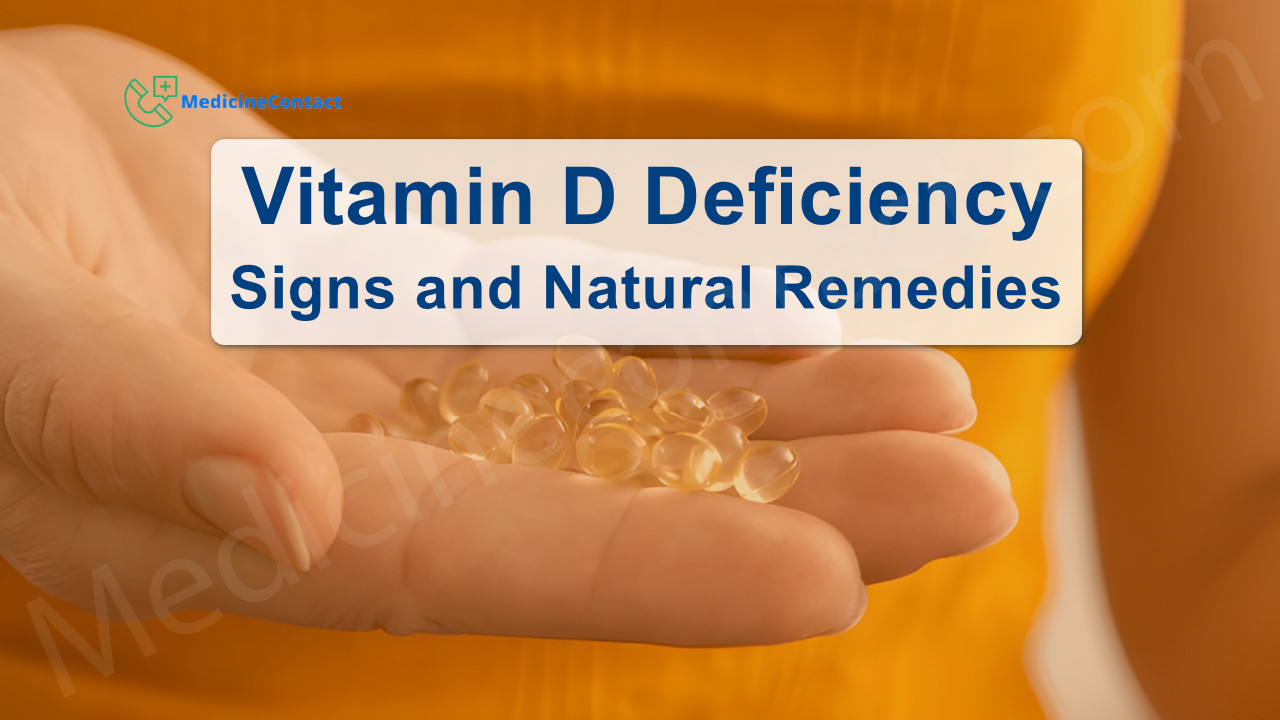
Understanding Vitamin D Deficiency
Vitamin D is a fat-soluble vitamin essential for calcium balance and bone health. It plays a crucial role in maintaining healthy bones and supporting the immune system. The deficiency of Vitamin D, known as Vitamin D deficiency, can lead to severe health issues such as osteomalacia, rickets in children, and osteoporosis in adults.
Who's at Risk?
Vitamin D deficiency is common worldwide, affecting up to 1 billion people. Certain groups are more at risk, including:
- Older adults: Their skin doesn't produce vitamin D as efficiently.
- People with obesity: Vitamin D gets trapped in body fat.
- Residents of nursing homes: They often spend less time outdoors.
- Patients in hospitals: Chronic illnesses and limited sun exposure can be factors.
What Causes Vitamin D Deficiency?
Several factors contribute to the development of Vitamin D deficiency:
- Not enough vitamin D in the diet: Not eating foods rich in Vitamin D, like fatty fish and fortified products.
- Less time in the sun: Due to aging, skin pigmentation, or lifestyle factors.
- Certain medical conditions: Disorders such as celiac disease or cystic fibrosis that impair absorption.
Understanding these elements helps outline the importance of maintaining adequate levels of Vitamin D for optimal health, especially in children where growth and development are critical.
Causes and Consequences of Vitamin D Deficiency
Dietary Sources of Vitamin D
Vitamin D, an essential nutrient for bone health, can be obtained through various dietary sources:
- Fatty fish such as salmon, mackerel, and sardines are rich in vitamin D.
- Fortified foods like milk, orange juice, and cereals provide an additional source of this vital nutrient.
Importance of Sun Exposure
Natural synthesis of vitamin D occurs through skin exposure to sunlight. Ultraviolet B (UVB) rays convert cholesterol in the skin into Vitamin D3 (cholecalciferol). Factors affecting sun exposure include:
- Geographic location
- Seasonal changes
- Skin pigmentation
Medical Conditions Leading to Malabsorption
Certain medical conditions can impede the absorption of vitamin D, leading to deficiency. Key conditions include:
- Celiac disease
- Cystic fibrosis
These malabsorption syndromes hinder the body's ability to absorb fats, which are critical for absorbing fat-soluble vitamins like vitamin D.
Common Symptoms in Adults
Vitamin D deficiency in adults manifests through various symptoms:
- Fatigue: Persistent tiredness despite adequate rest.
- Mood changes: Increased irritability or depression.
Recognizing these symptoms early can help mitigate severe health consequences.
Specific Signs in Children
Children present unique signs when deficient in vitamin D:
- Irritability: Unusual fussiness or crankiness.
- Developmental delays: Lagging in reaching milestones like walking or talking on time.
Ensuring adequate vitamin D intake is crucial for healthy child development and preventing related diseases such as rickets.
Understanding these causes and consequences helps underscore the importance of addressing vitamin D deficiency promptly.
Impact on Pediatric Health and Government Initiatives
Vitamin D deficiency is a significant concern in children's health, impacting their growth and development in various ways. One of the most severe conditions resulting from prolonged deficiency is rickets, a disease characterized by weakened and softened bones, leading to deformities and delayed milestones. Children suffering from this condition may exhibit symptoms such as bowed legs, thickened wrists and ankles, and delayed motor skills.
Increased Fracture Risk
A lack of vitamin D does not only affect bone development but also increases the risk of fractures during childhood. Insufficient levels compromise bone density, making bones more susceptible to breaks even with minor falls or injuries. This vulnerability underscores the importance of maintaining adequate vitamin D levels to ensure robust bone health from an early age.
Role of the Indian Academy of Pediatrics
Organizations like the Indian Academy of Pediatrics (IAP) play a crucial role in addressing these issues through comprehensive guidelines and awareness campaigns. The IAP provides valuable resources for healthcare providers and parents to recognize and prevent vitamin D deficiency. Their initiatives often include educational materials, training programs for healthcare professionals, and community outreach efforts aimed at promoting better nutritional practices.
"The Indian Academy of Pediatrics continuously emphasizes the importance of early diagnosis and intervention to mitigate the risks associated with vitamin D deficiency in children."
Government Initiatives
Several government programs aim to improve vitamin D levels among children, contributing significantly to public health. One notable initiative is the POSHAN Abhiyan program, which focuses on enhancing nutritional outcomes for children across India. This program includes measures such as:
- Fortification of foods: Encouraging the fortification of commonly consumed foods like milk and cereals with vitamin D.
- Supplementation programs: Providing free or subsidized vitamin D supplements to high-risk populations.
- Public awareness campaigns: Educating communities about the importance of sun exposure and dietary sources rich in vitamin D.
These efforts are essential in combating the widespread issue of vitamin D deficiency, ensuring that children can grow up healthy and strong.
By focusing on both medical guidance from organizations like IAP and practical measures through government initiatives, there is a coordinated effort to address this nutritional challenge effectively. This holistic approach helps safeguard children's health against the adverse effects of vitamin D deficiency.
Seamless integration between public health policies, medical advice, and community education forms the backbone of these initiatives, aiming for long-term improvements in pediatric health outcomes related to vitamin D.
Furthermore, recent research highlights the broader implications of vitamin D deficiency beyond just skeletal issues. It suggests potential links between insufficient vitamin D levels and various other health problems in children, underscoring the necessity for comprehensive strategies that address this critical public health issue.
Natural Remedies to Combat Vitamin D Deficiency
Maintaining adequate vitamin D levels is crucial for overall health, particularly for bone health and immune function. Addressing vitamin D deficiency involves a combination of dietary strategies, sunlight exposure, and supplementation.
Role of Diet in Increasing Vitamin D Levels
Diet plays a significant role in managing vitamin D deficiency. Incorporating foods rich in vitamin D can help elevate serum levels naturally. Key dietary sources include:
- Fatty Fish: Salmon, mackerel, and sardines are excellent natural sources.
- Fortified Foods: Many dairy products, orange juice, cereals, and plant-based milk alternatives are fortified with vitamin D.
- Egg Yolks and Beef Liver: These contain smaller amounts of vitamin D but can contribute to overall intake.
While natural food sources are beneficial, fortified foods often provide a more consistent supply of vitamin D, making them an essential part of dietary strategies.
Benefits of Safe Sun Exposure Practices
Sunlight is a primary source of vitamin D synthesis for the body. When UVB rays from the sun hit the skin, they trigger the production of vitamin D3 (cholecalciferol). Safe sun exposure practices include:
- Short Daily Exposure: Aim for 10-30 minutes of midday sun several times a week, depending on skin type and geographic location.
- Protective Measures: While getting sun, avoid overexposure to prevent skin damage. Use sunscreen after initial exposure periods to balance protection with vitamin synthesis.
Recommended Supplements
When natural sources are insufficient or when individuals have limited sun exposure, supplements become necessary. There are two main types:
- Vitamin D3 (Cholecalciferol): Derived from animal sources and more effective at raising blood levels of 25-hydroxyvitamin D.
- Vitamin D2 (Ergocalciferol): Plant-based and less potent than D3 but still useful in certain cases.
For optimal results, consult a healthcare provider to determine appropriate dosage based on individual needs and conditions. Regular monitoring can ensure that supplementation is effective and safe.
By integrating these natural remedies—dietary adjustments, safe sun exposure practices, and appropriate supplementation—individuals can effectively manage and prevent vitamin D deficiency.
Prevention Strategies for Vitamin D Deficiency in Children
Importance of Routine Screenings
Routine screenings are crucial for identifying and managing vitamin D deficiency, especially in high-risk pediatric groups. These include:
- Exclusively breastfed infants: Breast milk might not have enough vitamin D, putting infants at risk.
- Children with limited sun exposure: Those living in higher latitudes, heavily polluted areas, or who have darker skin pigmentation might need closer monitoring.
Regular check-ups with a Pediatrician can help ensure early detection and intervention. Such preventive measures are essential as highlighted in this study regarding the significance of routine screenings for vitamin D deficiency.
Educating Families on Dietary Sources and Lifestyle Changes
Parents and caregivers play a key role in preventing vitamin D deficiency. They can learn about:
Dietary Sources
Natural sources: Fatty fish (salmon, mackerel), egg yolks.
Fortified foods: Milk, cereals, orange juice.
Lifestyle Changes
- Encouraging safe sun exposure: Aim for short periods of sunlight without sunscreen during non-peak hours.
- Balancing indoor and outdoor activities to enhance natural vitamin D synthesis.
By incorporating these prevention strategies into daily routines, families can significantly reduce the risk of vitamin D deficiency in children. Regular educational sessions and resources provided by healthcare providers can empower families to make informed decisions about their children's nutritional health.
However, it is equally important to be aware of the potential risks associated with excessive vitamin D intake. This article provides valuable insights into managing both vitamin excess and deficiency.
Conclusion: Taking Action Against Vitamin D Deficiency in Children
Recognizing the extensive impact of Vitamin D deficiency on children's health is crucial. Early intervention through routine screenings, especially in high-risk populations, can significantly reduce risks such as developmental delays and increased fracture susceptibility.
Key Takeaways:
- Preventive Measures: Emphasize the importance of dietary sources, safe sun exposure practices, and appropriate supplementation.
- Public Health Initiatives: Support and utilize government programs like POSHAN Abhiyan aimed at combating deficiency.
- Education: Ensure families are well-informed about maintaining optimal vitamin D levels.
By integrating these strategies, the preventable nature of vitamin D deficiency can be addressed effectively, promoting overall children's health and development. For more detailed guidance, consider consulting a Pediatrician.
FAQs (Frequently Asked Questions)
What is Vitamin D deficiency and why is it important?
Vitamin D deficiency occurs when the body does not have enough vitamin D, which is crucial for maintaining healthy bones and overall pediatric health. It can lead to serious conditions such as rickets in children and increased fracture risk.
What are the common causes of Vitamin D deficiency?
Common causes include inadequate dietary intake, decreased sun exposure, and medical conditions that lead to malabsorption, such as celiac disease or cystic fibrosis.
How does Vitamin D deficiency affect children's health?
Vitamin D deficiency can significantly impact children's growth and development. It may result in rickets, delayed milestones, irritability, and an increased risk of bone fractures.
What are some natural remedies to combat Vitamin D deficiency?
Natural remedies include increasing dietary intake through fortified foods and fatty fish, practicing safe sun exposure, and considering supplements like Vitamin D3 or Vitamin D2 when necessary.
What prevention strategies can be taken to avoid Vitamin D deficiency in children?
Prevention strategies include routine screenings for high-risk populations, educating families about dietary sources of vitamin D, and promoting lifestyle changes that enhance sun exposure.
What initiatives are in place to address Vitamin D deficiency among children?
Organizations like the Indian Academy of Pediatrics provide guidelines and awareness campaigns. Additionally, government initiatives such as the POSHAN Abhiyan program aim to improve vitamin D levels among children.
Disclaimer: This article is for informational purposes only and does not constitute medical advice. Always consult with a healthcare professional before starting any new treatment regimen.




